I don’t know that I can say that I’ve always been interested in languages, but ever since I served a mission in Russia for the Church of Jesus Christ of Latter-day Saints and learned Russian, I’ve had an interest in languages. I took German in junior and high school, but never made any real progress. In high school, when they started teaching us about accusative and dative cases, my brain lost it. I remember doing a homework assignment dealing with those and asking my native German-speaking grandmother and my German-speaking father for help and still just having brain cramps. Learning Russian was also very difficult, but I was able to overcome my problem with cases, and it’s been fun to attempt to keep some of these language skills from earlier in my life up since then. Learning foreign languages like German and Russian also helped me understand things like English grammar and the etymology of English words a little better. As a really young kid, I remember a copy of the Merriam-Webster dictionary on our shelf and sometimes asking my mom why we never read “the big, red book.”
 The Forgotten Founding Father: Noah Webster’s Obsession and the Creation of an American Culture by Joshua Kendall (ISBN: 978-0425-24545-3) tells about how that “big, red book” came to be thanks to another person who was very interested in words and language. The book chronicles Webster’s life from boyhood to death, taking a very detailed look at the parts of his life that led to his creation of the famous dictionary, part of Webster’s desire to make America its own unique country. Somewhat unusual for his day, Webster went to college even though he came from a farmer’s family. He then pursued a career tied to literature. He wrote extensively, including many essays, letters, and pamphlets in support of American independence and then in support of a federal republic. While his writings are not as well known today as those of others like Hamilton, at the time, there were many leading Americans who believed Webster’s efforts were essential parts of swaying public opinion. Webster initially made his name by publishing a speller, a book that helped schoolchildren learn to read and write. This book provided him with a foundational income throughout his life. He also worked as a lawyer, editor, and publisher. What he realized he loved doing, though, was more similar to the speller: compiling, organizing, and ordering information. This led to his interest in dictionaries. He found flaws in extant dictionaries and decided to improve on them by publishing his own. One motivation he had for this was that he believed a uniquely American language would help create and uphold a uniquely American culture, one that was needed to help the nascent nation maintain its distance from its former imperial overlords and move forward. While his ideas on government changed over the course of his life, his belief in America did not. The dictionary took much more time and money than he thought it would, but it was eventually published and created a new standard as well as codifying much of what was then a unique American language with new words expressing the new ideas embodied by the new nation.
The Forgotten Founding Father: Noah Webster’s Obsession and the Creation of an American Culture by Joshua Kendall (ISBN: 978-0425-24545-3) tells about how that “big, red book” came to be thanks to another person who was very interested in words and language. The book chronicles Webster’s life from boyhood to death, taking a very detailed look at the parts of his life that led to his creation of the famous dictionary, part of Webster’s desire to make America its own unique country. Somewhat unusual for his day, Webster went to college even though he came from a farmer’s family. He then pursued a career tied to literature. He wrote extensively, including many essays, letters, and pamphlets in support of American independence and then in support of a federal republic. While his writings are not as well known today as those of others like Hamilton, at the time, there were many leading Americans who believed Webster’s efforts were essential parts of swaying public opinion. Webster initially made his name by publishing a speller, a book that helped schoolchildren learn to read and write. This book provided him with a foundational income throughout his life. He also worked as a lawyer, editor, and publisher. What he realized he loved doing, though, was more similar to the speller: compiling, organizing, and ordering information. This led to his interest in dictionaries. He found flaws in extant dictionaries and decided to improve on them by publishing his own. One motivation he had for this was that he believed a uniquely American language would help create and uphold a uniquely American culture, one that was needed to help the nascent nation maintain its distance from its former imperial overlords and move forward. While his ideas on government changed over the course of his life, his belief in America did not. The dictionary took much more time and money than he thought it would, but it was eventually published and created a new standard as well as codifying much of what was then a unique American language with new words expressing the new ideas embodied by the new nation.Overall, I enjoyed reading the book and found it interesting and informational. Reading of the American Founding and those who played integral roles in those events is always interesting. I found some of the discussion of early American literature and the academic scene to be less intriguing, but understand that it helped set the stage for Webster’s work and may be a necessary part of telling his story. It seemed the author wanted to diagnose Webster with some kind of mental disorder (OCD, autism, etc.), but never really came out and said it, just approached it tangentially. That constant repetition of that theme was a little distracting. The dictionary itself is only the last quarter of the book, so there’s a lot of other material to get through, but I thought the case for Webster’s role in America becoming its own entity, separate from Great Britain, was made convincingly. Those interested in the Revolution and the Founding, not just nerdy linguistic things will find the book of interest.

|
This work, including all text, photographs, and other original work, is licensed under a Creative Commons Attribution-NonCommercial-NoDerivatives 4.0 International License and is copyrighted © MMXXI John Pruess. |
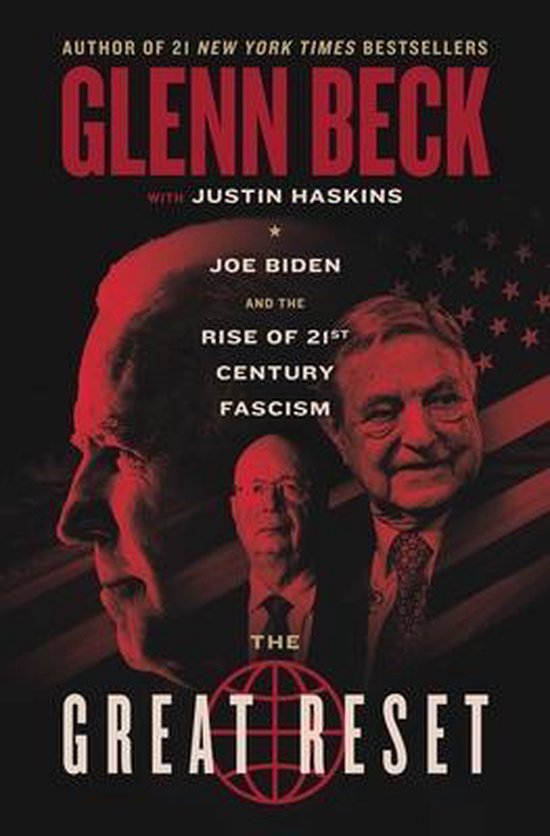
 Why I Stand by Jonathan Isaac (ISBN: 978-1-956007-06-0) is a book that exists because of one of those moments. After the protests and riots that occurred after George Floyd’s death, many athletes used their position (“platform” being the buzzword everyone liked to use) to advocate for a message they believed in. One of the more controversial ways they did this was to kneel during the national anthem. Jonathan Isaac, a very promising NBA player, chose to buck the trend and stand during the national anthem. He stood out even more because he did not choose to wear the Black Lives Matter apparel that most others did. Like most things, his decisions in that matter were not just sudden, spur-of-the-moment thoughts. They were based on a lifetime of experiences and a large body of personal beliefs. The book recounts Isaac’s childhood, high school and college experiences and rather meteoric rise in the sport of basketball from a no-name kid playing inconsistently in high school to a top-10 NBA draft pick. It also discusses Isaac’s struggles with anxiety and belief in his own worth, which were ultimately helped more than anything by a spiritual journey that led to a firm belief in God. He writes about going to church as a kid, but not really knowing why and not applying what was being taught. Like many people, he had some negative experiences with organized religion along the way, and by the time he was playing in the NBA as a rookie, he was connected to religion in name only. A neighbor who was a church leader and a few setbacks in his basketball career provided opportunities for Isaac to re-evaluate his relationship with God, and his honest approach to that led to a conversion that led to action that ranged from feeding the poor to becoming a pastor in his church. Ultimately, those convictions led him to stand while his teammates knelt during the national anthem, but he believed that incident was just one instance of standing for truth and right and that God asks that of His followers in many other situations, too.
Why I Stand by Jonathan Isaac (ISBN: 978-1-956007-06-0) is a book that exists because of one of those moments. After the protests and riots that occurred after George Floyd’s death, many athletes used their position (“platform” being the buzzword everyone liked to use) to advocate for a message they believed in. One of the more controversial ways they did this was to kneel during the national anthem. Jonathan Isaac, a very promising NBA player, chose to buck the trend and stand during the national anthem. He stood out even more because he did not choose to wear the Black Lives Matter apparel that most others did. Like most things, his decisions in that matter were not just sudden, spur-of-the-moment thoughts. They were based on a lifetime of experiences and a large body of personal beliefs. The book recounts Isaac’s childhood, high school and college experiences and rather meteoric rise in the sport of basketball from a no-name kid playing inconsistently in high school to a top-10 NBA draft pick. It also discusses Isaac’s struggles with anxiety and belief in his own worth, which were ultimately helped more than anything by a spiritual journey that led to a firm belief in God. He writes about going to church as a kid, but not really knowing why and not applying what was being taught. Like many people, he had some negative experiences with organized religion along the way, and by the time he was playing in the NBA as a rookie, he was connected to religion in name only. A neighbor who was a church leader and a few setbacks in his basketball career provided opportunities for Isaac to re-evaluate his relationship with God, and his honest approach to that led to a conversion that led to action that ranged from feeding the poor to becoming a pastor in his church. Ultimately, those convictions led him to stand while his teammates knelt during the national anthem, but he believed that incident was just one instance of standing for truth and right and that God asks that of His followers in many other situations, too.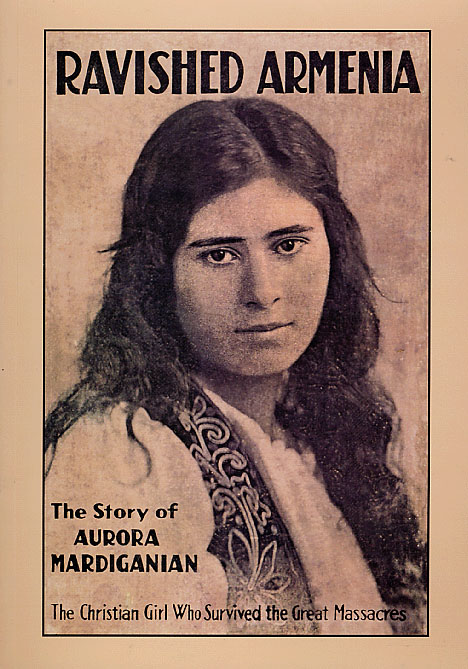 Ravished Armenia: The Story of Aurora Mardiganian, the Christian Girl Who Survived the Great Massacres by Aurora Mardiganian (Arshalyus Mardiganyan) is an autobiographical account of the Turkish oppression of the Armenian people in the Ottoman Empire starting in 1915. The Mardiganian family, relatively wealthy financiers, are warned by their shepherd that he had a dream about the Armenians’ imminent destruction, but his prediction is dismissed. Soon, though, it comes true, as the family is driven from their home, along with all the other Armenians. Occasionally, leniency is shown to those who will renounce their Christian faith and adopt Islam, but even then, the freshly converted Armenians are killed by their Turkish and Kurdish oppressors. Aurora, like most of the women and children, is driven from place to place, guarded by Turkish policemen. Those who are too slow to keep up during forced marches are dispatched quickly and usually cruelly, although Mardiganian’s account does point out a few instances of decency and humanity from guards or locals in the places the Armenians were marched. Her story, like many of those who lived during this time, is made all the more tragic because she was there to see the deaths of her father, mother, a sister, and a brother. She was sold multiple times to be a harem girl. This never worked out for the buyer because Aurora was never willing to accept Islam. It really didn’t work out for her, either, though, because her refusals were usually met with abuse and deprivation. After wandering the Ottoman Empire under the care of the Turkish police or as the property of various rich Turks, having seen so much killing, rape, and pillaging, her old shepherd friend, then working for a Turk trying to get Aurora to submit to Islam before being fully accepted into his harem, helped her escape. She stayed with friendly Kurds before eventually being helped by Americans in the region and then making her way to Russian-controlled territory and under Russian and Armenian military oversight, made her way to Tbilisi, then Russia, and then the United States.
Ravished Armenia: The Story of Aurora Mardiganian, the Christian Girl Who Survived the Great Massacres by Aurora Mardiganian (Arshalyus Mardiganyan) is an autobiographical account of the Turkish oppression of the Armenian people in the Ottoman Empire starting in 1915. The Mardiganian family, relatively wealthy financiers, are warned by their shepherd that he had a dream about the Armenians’ imminent destruction, but his prediction is dismissed. Soon, though, it comes true, as the family is driven from their home, along with all the other Armenians. Occasionally, leniency is shown to those who will renounce their Christian faith and adopt Islam, but even then, the freshly converted Armenians are killed by their Turkish and Kurdish oppressors. Aurora, like most of the women and children, is driven from place to place, guarded by Turkish policemen. Those who are too slow to keep up during forced marches are dispatched quickly and usually cruelly, although Mardiganian’s account does point out a few instances of decency and humanity from guards or locals in the places the Armenians were marched. Her story, like many of those who lived during this time, is made all the more tragic because she was there to see the deaths of her father, mother, a sister, and a brother. She was sold multiple times to be a harem girl. This never worked out for the buyer because Aurora was never willing to accept Islam. It really didn’t work out for her, either, though, because her refusals were usually met with abuse and deprivation. After wandering the Ottoman Empire under the care of the Turkish police or as the property of various rich Turks, having seen so much killing, rape, and pillaging, her old shepherd friend, then working for a Turk trying to get Aurora to submit to Islam before being fully accepted into his harem, helped her escape. She stayed with friendly Kurds before eventually being helped by Americans in the region and then making her way to Russian-controlled territory and under Russian and Armenian military oversight, made her way to Tbilisi, then Russia, and then the United States.
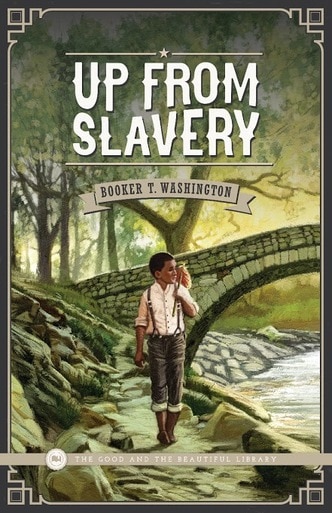 Up from Slavery by Booker T. Washington (ISBN: 978-0-9997797-3-6) tells of the famous educator’s life from his early boyhood as a slave to his rise as a professor and principal (these days we’d probably say president) of the Tuskegee Institute. The book was short on the childhood section, understandably so, since he was so quite young when slavery ended and had spent his days like all the other slaves: working. Once freed, he and his family struggled like many to find work that would pay the bills, but they succeeded, and his mom encouraged an innate love for learning that eventually led to Washington’s heading off to the Hampton School. A popular place with newly freed blacks trying to improve their lot, the school didn’t have a lot of room, but Booker so impressed the lady in charge of admissions when he was asked to clean some of the school rooms, that he made it in. He didn’t squander a single opportunity, graduated, and then set about to provide opportunities for others. What that led to was his founding the Tuskegee Institute. The greater section of the book is spent chronicling how the school came about, its struggles and successes, and its growth and Washington’s efforts to promote the school and secure the funding needed to keep it on its own two feet. He worked hard no matter what he was involved in, whether teaching, overseeing the school, working in his own home with animals and in his garden, or fundraising. He was also a well-known and in-demand orator, invited to speak at functions, fairs, and other public events. Throughout the book, he spends significant time noting that service, hard work, fulfilling one’s duties, giving things one’s best shot, and honesty are the keys to success and happiness in life. He also touches on the question of race and racism, but only as a reality that is in the background and that mostly stays there when one develops the abovementioned qualities and masters skills that others require, such as the brickmaking, animal husbandry, sewing, architecture, dairy farming, and others that his school taught in addition to academic subjects.
Up from Slavery by Booker T. Washington (ISBN: 978-0-9997797-3-6) tells of the famous educator’s life from his early boyhood as a slave to his rise as a professor and principal (these days we’d probably say president) of the Tuskegee Institute. The book was short on the childhood section, understandably so, since he was so quite young when slavery ended and had spent his days like all the other slaves: working. Once freed, he and his family struggled like many to find work that would pay the bills, but they succeeded, and his mom encouraged an innate love for learning that eventually led to Washington’s heading off to the Hampton School. A popular place with newly freed blacks trying to improve their lot, the school didn’t have a lot of room, but Booker so impressed the lady in charge of admissions when he was asked to clean some of the school rooms, that he made it in. He didn’t squander a single opportunity, graduated, and then set about to provide opportunities for others. What that led to was his founding the Tuskegee Institute. The greater section of the book is spent chronicling how the school came about, its struggles and successes, and its growth and Washington’s efforts to promote the school and secure the funding needed to keep it on its own two feet. He worked hard no matter what he was involved in, whether teaching, overseeing the school, working in his own home with animals and in his garden, or fundraising. He was also a well-known and in-demand orator, invited to speak at functions, fairs, and other public events. Throughout the book, he spends significant time noting that service, hard work, fulfilling one’s duties, giving things one’s best shot, and honesty are the keys to success and happiness in life. He also touches on the question of race and racism, but only as a reality that is in the background and that mostly stays there when one develops the abovementioned qualities and masters skills that others require, such as the brickmaking, animal husbandry, sewing, architecture, dairy farming, and others that his school taught in addition to academic subjects.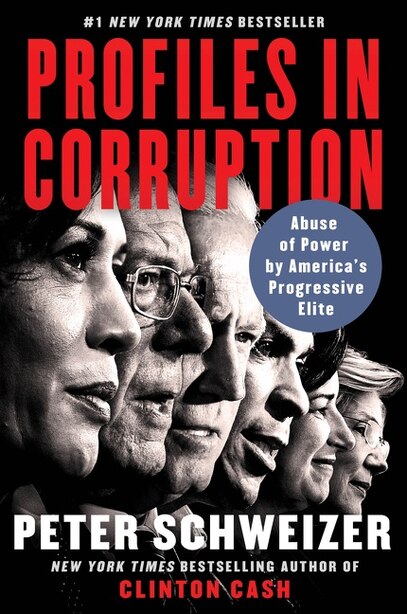
 Franklin & Washington: The Founding Partnership by Edward J. Larson (ISBN: 978-0-06-288016-1) takes an often detailed look at how Benjamin Franklin and George Washington worked toward common goals during the Revolutionary era, often working in concert to attain the desired outcome of a free United States. Larson provides an overview of each man’s life, which establishes that even before they knew each other, they had much in common. They were colonists, their early fortunes were tied to the western frontiers of their respective colonies, and they were involved in military and political matters. While their person routes to success were different, with Franklin rising to wealth and fame via hard work, ingenuity, and learning and exploiting the political scene, Washington had a slightly easier route that involved coming into land and marrying into a wealthy family. Ultimately, though, he, too, was a self-made man, parlaying his surveying and military skills into productive aspects of management and leadership, letting him be a successful estate owner and businessman with a strong ability to find workable compromises in otherwise explosive situations. Once both were convinced that British rule was not the way to go for the colonies, they poured their hearts and souls into independence. They believed strongly in liberty, and put their money where their mouths were, sacrificing time, money, and more to the cause of liberty. Franklin spent years abroad; Washington spent years leading the Continental Army. Once independence had been secured, both turned their attention to helping the thirteen colonies unify, something both strongly believed in. This was more time and sacrifice. They were leaders at the Constitutional Convention. Their styles there sometimes differed, but they worked toward a common goal of a unified country with a federal government strong enough to keep the states in check at times. Larson also spends a significant amount of time talking about one of the biggest differences between the two, which was their outlook on slavery. While they started life someone on the same footing there, Franklin slowly evolved to eventually come to an abolitionist viewpoint. Washington never moved from his position as a slave holder, although he was willing to go along with the anti-slavery clauses in the Constitution.
Franklin & Washington: The Founding Partnership by Edward J. Larson (ISBN: 978-0-06-288016-1) takes an often detailed look at how Benjamin Franklin and George Washington worked toward common goals during the Revolutionary era, often working in concert to attain the desired outcome of a free United States. Larson provides an overview of each man’s life, which establishes that even before they knew each other, they had much in common. They were colonists, their early fortunes were tied to the western frontiers of their respective colonies, and they were involved in military and political matters. While their person routes to success were different, with Franklin rising to wealth and fame via hard work, ingenuity, and learning and exploiting the political scene, Washington had a slightly easier route that involved coming into land and marrying into a wealthy family. Ultimately, though, he, too, was a self-made man, parlaying his surveying and military skills into productive aspects of management and leadership, letting him be a successful estate owner and businessman with a strong ability to find workable compromises in otherwise explosive situations. Once both were convinced that British rule was not the way to go for the colonies, they poured their hearts and souls into independence. They believed strongly in liberty, and put their money where their mouths were, sacrificing time, money, and more to the cause of liberty. Franklin spent years abroad; Washington spent years leading the Continental Army. Once independence had been secured, both turned their attention to helping the thirteen colonies unify, something both strongly believed in. This was more time and sacrifice. They were leaders at the Constitutional Convention. Their styles there sometimes differed, but they worked toward a common goal of a unified country with a federal government strong enough to keep the states in check at times. Larson also spends a significant amount of time talking about one of the biggest differences between the two, which was their outlook on slavery. While they started life someone on the same footing there, Franklin slowly evolved to eventually come to an abolitionist viewpoint. Washington never moved from his position as a slave holder, although he was willing to go along with the anti-slavery clauses in the Constitution.
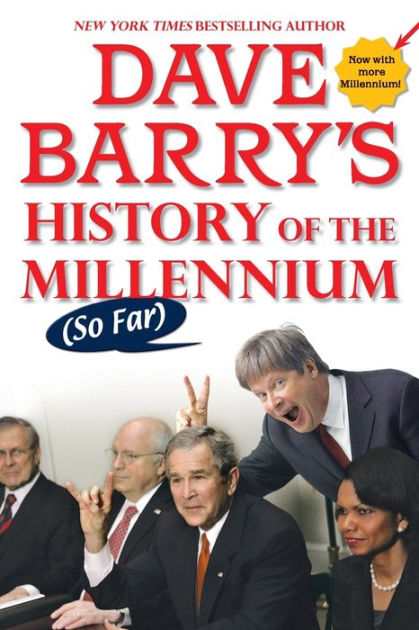 Dave Barry’s History of the Millennium (So Far) by Dave Barry (ISBN: 978-0-399-15437-9) is a compilation of those year-end columns for the first few years of the 2000s. Since those were always multi-page columns, the book is a decent length even though it doesn’t even deal with a full decade. The style of Barry’s columns relies on a couple main devices. One is to make fun of real events, and given the state of American politics, that is easy to do. Often, it seemed like he didn’t have to do a lot of writing; the material was writing itself. Another is to start by reporting a real event and then, suddenly and usually rather abruptly, turn it into something surreal or absurd. The subject of the jokes is wide ranging and includes politics, religion, sports, crime, popular culture (singers, movie stars, and generic celebrities who are famous for now real reason), and some bizarre things that make hometown papers only. As the cover to the book suggests, the Republican Party and President Bush are the subject of many jokes, but politicians at all levels find themselves in Barry’s crosshairs. Another continuing theme throughout the book is that things really are getting worse. Each year’s summary starts out with a comment about how we all hoped the year would be a good one and would improve on the past, but that, as usual, we were all disappointed with just how the latest year turned out. Given the ineptitude around us, why should we keep being so optimistic? It’s never dark humor, but there is a level of sarcasm or cynicism that often gives the jokes an edge.
Dave Barry’s History of the Millennium (So Far) by Dave Barry (ISBN: 978-0-399-15437-9) is a compilation of those year-end columns for the first few years of the 2000s. Since those were always multi-page columns, the book is a decent length even though it doesn’t even deal with a full decade. The style of Barry’s columns relies on a couple main devices. One is to make fun of real events, and given the state of American politics, that is easy to do. Often, it seemed like he didn’t have to do a lot of writing; the material was writing itself. Another is to start by reporting a real event and then, suddenly and usually rather abruptly, turn it into something surreal or absurd. The subject of the jokes is wide ranging and includes politics, religion, sports, crime, popular culture (singers, movie stars, and generic celebrities who are famous for now real reason), and some bizarre things that make hometown papers only. As the cover to the book suggests, the Republican Party and President Bush are the subject of many jokes, but politicians at all levels find themselves in Barry’s crosshairs. Another continuing theme throughout the book is that things really are getting worse. Each year’s summary starts out with a comment about how we all hoped the year would be a good one and would improve on the past, but that, as usual, we were all disappointed with just how the latest year turned out. Given the ineptitude around us, why should we keep being so optimistic? It’s never dark humor, but there is a level of sarcasm or cynicism that often gives the jokes an edge.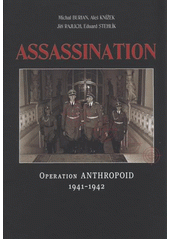 Assassination: Operation Anthropoid: 1941–1942 by Michal Burian, Aleš Knížek, Jiří Rajlich, and Eduard Stehlík (ISBN: 80-7278-158-8) tells the story of one of the better-known assassinations in World War II, that of Reinhard Heydrich, the commander of the Reich Security Main Office (RSHA), acting governor of the Protectorate of Bohemia and Moravia, and a principal architect of the Holocaust. The operation was conceived by Czechoslovaks in exile in the UK, but carried out by paratroop commandos in occupied Czechoslovakia in concert with local members of the resistance. Like many of the operations in occupied Czechoslovakia, most of the people involved ended up dead. Radio operators, paratroopers and soldiers, resistance members who helped the paratroopers hide, farmers who lent a place to stay or a warm meal, all of them met the same fate once the Nazis discovered that they were in any way associated with the efforts against Germany. Thankfully for the Czechoslovaks, there were enough people that were willing to risk it all, and two of the paratroopers who had undergone intensive and extensive training in the UK, Jozef Gabčík and Jan Kubiš, were able to execute their plan against Heydrich. The plan was to shoot him, but that didn’t initially work, so a bomb was tossed toward his car. The explosion, which happened just outside the back of the car, didn’t kill Heydrich initially, and the attackers had to run away, chased for a short distance by their target. A week later, Heydrich succumbed to his wounds, and in the coming weeks, Nazi reprisals wiped out complete Czechoslovak towns and eventually also wiped out Gabčík and Kubiš.
Assassination: Operation Anthropoid: 1941–1942 by Michal Burian, Aleš Knížek, Jiří Rajlich, and Eduard Stehlík (ISBN: 80-7278-158-8) tells the story of one of the better-known assassinations in World War II, that of Reinhard Heydrich, the commander of the Reich Security Main Office (RSHA), acting governor of the Protectorate of Bohemia and Moravia, and a principal architect of the Holocaust. The operation was conceived by Czechoslovaks in exile in the UK, but carried out by paratroop commandos in occupied Czechoslovakia in concert with local members of the resistance. Like many of the operations in occupied Czechoslovakia, most of the people involved ended up dead. Radio operators, paratroopers and soldiers, resistance members who helped the paratroopers hide, farmers who lent a place to stay or a warm meal, all of them met the same fate once the Nazis discovered that they were in any way associated with the efforts against Germany. Thankfully for the Czechoslovaks, there were enough people that were willing to risk it all, and two of the paratroopers who had undergone intensive and extensive training in the UK, Jozef Gabčík and Jan Kubiš, were able to execute their plan against Heydrich. The plan was to shoot him, but that didn’t initially work, so a bomb was tossed toward his car. The explosion, which happened just outside the back of the car, didn’t kill Heydrich initially, and the attackers had to run away, chased for a short distance by their target. A week later, Heydrich succumbed to his wounds, and in the coming weeks, Nazi reprisals wiped out complete Czechoslovak towns and eventually also wiped out Gabčík and Kubiš.